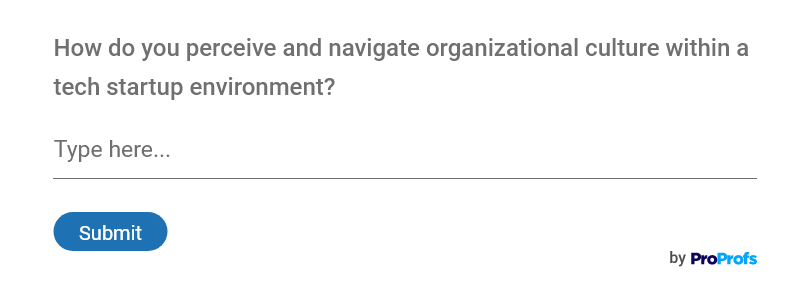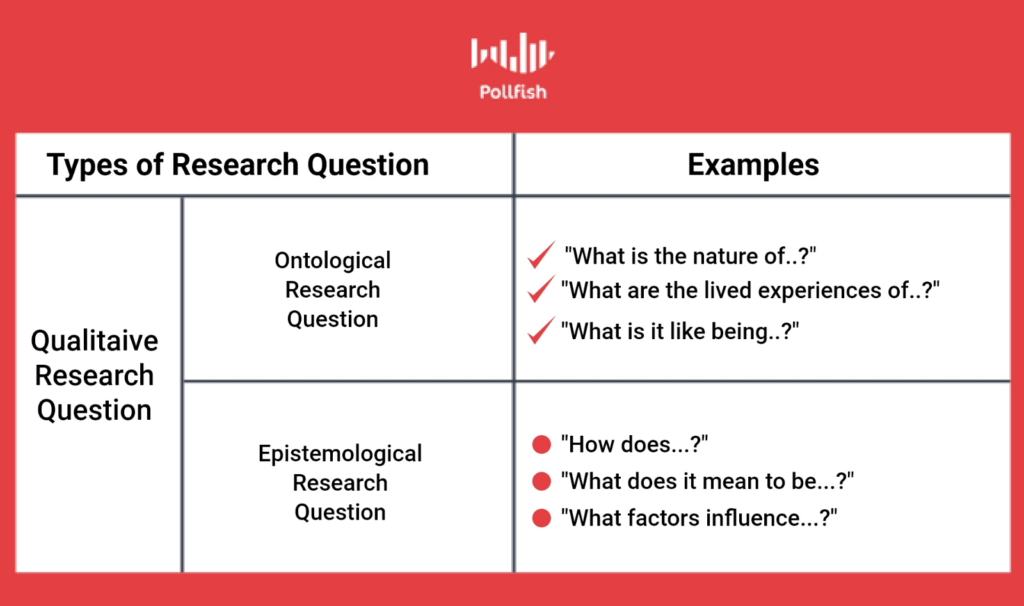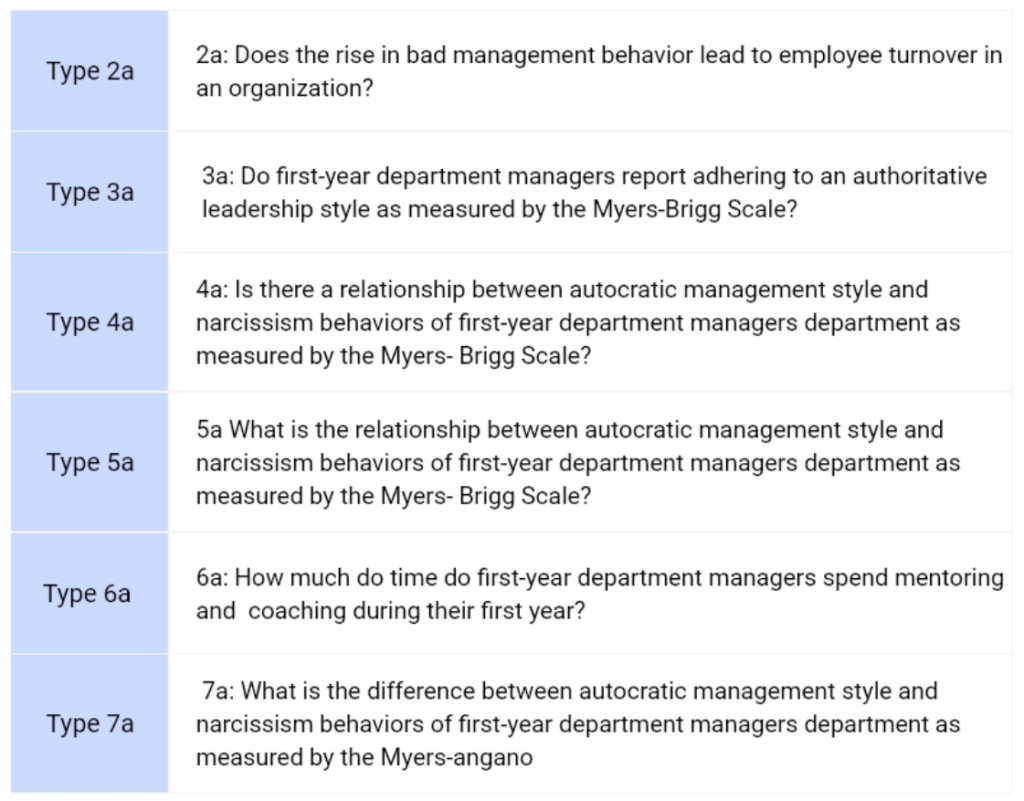
Qualitative research questions focus on depth and quality, exploring the “why and how” behind decisions, without relying on statistical tools.
Unlike quantitative research, which aims to collect tangible, measurable data from a broader demographic, qualitative analysis involves smaller, focused datasets, identifying patterns for insights.
The information collected by qualitative surveys can vary from text to images, demanding a deep understanding of the subject, and therefore, crafting precise qualitative research questions is crucial for success.
In this guide, we’ll discuss how to write effective qualitative research questions, explore various types, and highlight characteristics of good qualitative research questions.
Let’s dive in!
What Are Qualitative Research Questions?
Qualitative questions aim to understand the depth and nuances of a phenomenon, focusing on “why” and “how” rather than quantifiable measures.
They explore subjective experiences, perspectives, and behaviors, often using open-ended inquiries to gather rich, descriptive data.
Unlike quantitative questions, which seek numerical data, qualitative questions try to find out meanings, patterns, and underlying processes within a specific context.
These questions are essential for exploring complex issues, generating hypotheses, and gaining deeper insights into human behavior and phenomena.
Here’s an example of a qualitative research question:
“How do you perceive and navigate organizational culture within a tech startup environment?”

This question asks about the respondent’s subjective interpretations and experiences of organizational culture within a specific context, such as a tech startup.
It seeks to uncover insights into the values, norms, and practices that shape workplace dynamics and employee behaviors, providing qualitative data for analysis and understanding.
When Should We Use Qualitative Research Questions?
Qualitative research questions typically aim to open up conversations, encourage detailed narratives, and foster a deep understanding of the subject matter. Here are some scenarios they are best suited for:
- Exploring Complex Phenomena: When the research topic involves understanding complex processes, behaviors, or interactions that cannot be quantified easily, qualitative questions help delve into these intricate details.
- Understanding Contexts and Cultures: To grasp the nuances of different social contexts, cultures, or subcultures, qualitative research questions allow for an in-depth exploration of these environments and how they influence individuals and groups.
- Exploring Perceptions and Experiences: When the aim is to understand people’s perceptions, experiences, or feelings about a particular subject, qualitative questions facilitate capturing the depth and variety of these perspectives.
- Developing Concepts or Theories: In the early stages of research, where concepts or theories are not yet well-developed, qualitative questions can help generate hypotheses, identify variables, and develop theoretical frameworks based on observations and interpretations.
- Investigating Processes: To understand how processes unfold over time and the factors that influence these processes, qualitative questions are useful for capturing the dynamics and complexities involved.
- Seeking to Understand Change: When researching how individuals or groups experience change, adapt to new circumstances, or make decisions, qualitative research questions can provide insights into the motivations, challenges, and strategies involved.
- Studying Phenomena Not Easily Quantified: For phenomena that are not easily captured through quantitative measures, such as emotions, beliefs, or motivations, qualitative questions can probe these abstract concepts more effectively.
- Addressing Sensitive or Taboo Topics: In studies where topics may be sensitive, controversial, or taboo, qualitative research questions allow for a respectful and empathetic exploration of these subjects, providing space for participants to share their experiences in their own words.
How to Write Qualitative Research Questions?
Read this guide to learn how you can craft well-thought-out qualitative research questions:
1. Begin with Your Research Goals
The first step in formulating qualitative research questions is to have a clear understanding of what you aim to discover or understand through your research. There are two types of qualitative questionnaires or research – Ontological and Epistemological.
Finding out the nature of your research influences all aspects of your research design, including the formulation of research questions.
Subsequently:
- Identify your main objective: Consider the broader context of your study. Are you trying to explore a phenomenon, understand a process, or interpret the meanings behind behaviors? Your main objective should guide the formulation of your questions, ensuring they are aligned with what you seek to achieve.
- Focus on the ‘how’ and ‘why’: Qualitative research is inherently exploratory and aims to understand the nuances of human behavior and experience. Starting your questions with “how” or “why” encourages a deeper investigation into the motivations, processes, and contexts underlying the subject matter. This approach facilitates an open-ended exploration, allowing participants to provide rich, detailed responses that illuminate their perspectives and experiences.
Take a quick look at the following visual for a better understanding:

So, if you are doing Ontological research, ensure that the questions focus on the “what” aspects of reality (the premise of your research) and opt for the nature of the knowledge for Epistemological research.
2. Choose the Right Structure
The structure of your research questions significantly impacts the depth and quality of data you collect. Opting for an open-ended format allows respondents the flexibility to express themselves freely, providing insights that pre-defined answers might miss.
- Open-ended format: These questions do not constrain respondents to a set of predetermined answers, unlike closed-ended questions. By allowing participants to articulate their thoughts in their own words, you can uncover nuances and complexities in their responses that might otherwise be overlooked.
- Avoid yes/no questions: Yes/no questions tend to limit the depth of responses. While they might be useful for gathering straightforward factual information, they are not conducive to exploring the depths and nuances that qualitative research seeks to uncover. Encouraging participants to elaborate on their experiences and perspectives leads to richer, more informative data.
For example, take a look at some qualitative questions examples shown in the following image:

3. Be Clear and Specific
Clarity and specificity in your questions are crucial to ensure that participants understand what is being asked and that their responses are relevant to your research objectives.
- Use clear language: Use straightforward, understandable language in your questions. Avoid jargon, acronyms, or overly technical terms that might confuse participants or lead to misinterpretation. The goal is to make your questions accessible to everyone involved in your study.
- Be specific: While maintaining the open-ended nature of qualitative questions, it’s important to narrow down your focus to specific aspects of the phenomenon you’re studying. This specificity helps guide participants’ responses and ensures that the data you collect directly relates to your research objectives.
4. Ensure Relevance and Feasibility
Each question should be carefully considered for its relevance to your research goals and its feasibility, given the constraints of your study.
- Relevance: Questions should be crafted to address the core objectives of your research directly. They should probe areas that are essential to understanding the phenomenon under investigation and should align with your theoretical framework or literature review findings.
- Feasibility: Consider the practical aspects of your research, including the time available for data collection and analysis, resources, and access to participants. Questions should be designed to elicit meaningful responses within the constraints of your study, ensuring that you can gather and analyze data effectively.
5. Focus on a Single Concept or Theme per Question
To ensure clarity and depth, each question should concentrate on a single idea or theme. However, if your main qualitative research question is tough to understand or has a complex structure, you can create sub-questions in limited numbers and with a “ladder structure”.
This will help your respondents understand the overall research objective in mind, and your research can be executed in a better manner.
For example, suppose your main question is – “What is the current state of illiteracy in your state?”
Then, you can create the following subquestions:
“How does illiteracy block progress in your state?”
“How would you best describe the feelings you have about illiteracy in your state?”
For an even better understanding, you can see the various qualitative research question examples in the following image:

| 💡 Tips for Refinement:
📊 Pilot your questions: Test them with a small group similar to your study population to ensure they are understood as intended and elicit the kind of responses you are seeking. 📝Be flexible: Be prepared to refine your questions based on pilot feedback or as your understanding of the topic deepens. |
Types of Qualitative Research Questions With Examples
Qualitative survey questions primarily focus on a specific group of respondents that are participating in case studies, surveys, ethnography studies, etc., rather than numbers or statistics.
As a result, the questions are mostly open-ended and can be subdivided into the following types as discussed below:
1. Descriptive Questions
Descriptive research questions aim to detail the “what” of a phenomenon, providing a comprehensive overview of the context, individuals, or situations under study. These questions are foundational, helping to establish a baseline understanding of the research topic.
Examples:
- What are the daily experiences of teachers in urban elementary schools?
- What strategies do small businesses employ to adapt to rapid technological changes?
- How do young adults describe their transition from college to the workforce?
- What are the coping mechanisms of families with members suffering from chronic illnesses?
- How do community leaders perceive the impact of gentrification in their neighborhoods?
2. Interpretive Questions
Interpretive questions seek to understand the “how” and “why” behind a phenomenon, focusing on the meanings people attach to their experiences. These questions delve into the subjective interpretations and perceptions of participants.
Examples:
- How do survivors of natural disasters interpret their experiences of recovery and rebuilding?
- Why do individuals engage in voluntary work within their communities?
- How do parents interpret and navigate the challenges of remote schooling for their children?
- Why do consumers prefer local products over global brands in certain markets?
- How do artists interpret the influence of digital media on traditional art forms?
3. Comparative Questions
Comparative research questions are designed to explore differences and similarities between groups, settings, or time periods. These questions can help to highlight the impact of specific variables on the phenomenon under study.
Examples:
- How do the strategies for managing work-life balance compare between remote and office workers?
- What are the differences in consumer behavior towards sustainable products in urban versus rural areas?
- How do parenting styles in single-parent households compare to those in dual-parent households?
- What are the similarities and differences in leadership styles across different cultures?
- How has the perception of online privacy changed among teenagers over the past decade?
4. Process-oriented Questions
These questions focus on understanding the processes or sequences of events over time. They aim to uncover the “how” of a phenomenon, tracing the development, changes, or evolution of specific situations or behaviors.
Examples:
- How do non-profit organizations develop and implement community outreach programs?
- What is the process of decision-making in high-stakes business environments?
- How do individuals navigate the process of career transition after significant industry changes?
- What are the stages of adaptation for immigrants in a new country?
- How do social movements evolve from inception to national recognition?
5. Evaluative Questions
Evaluative questions aim to assess the effectiveness, value, or impact of a program, policy, or phenomenon. These questions are critical for understanding the outcomes and implications of various initiatives or situations.
Examples:
- How effective are online therapy sessions compared to in-person sessions in treating anxiety?
- What is the impact of community gardening programs on neighborhood cohesion?
- How do participants evaluate the outcomes of leadership training programs in their professional development?
- What are the perceived benefits and drawbacks of telecommuting for employees and employers?
- How do residents evaluate the effectiveness of local government policies on waste management?
6. One-on-One Questions
The one-on-one questions are asked to a single person and can be thought of as individual interviews that you can conduct online via phone and video chat as well.
The main aim of such questions is to ask your customers or people in the focus group a series of questions about their purchase motivations. These questions might also come with follow-ups, and if your customers respond with some interesting fact or detail, dig deeper and explore the findings as much as you want.
Examples:
- What makes you happy in regard to [your research topic]?
- If I could make a wish of yours come true, what do you desire the most?
- What do you still find hard to come to terms with?
- Have you bought [your product] before?
- If so, what was your initial motivation behind the purchase?
7. Exploratory Questions
These questions are designed to enhance your understanding of a particular topic. However, while asking exploratory questions, you must ensure that there are no preconceived notions or biases to it. The more transparent and bias-free your questions are, the better and fair results you will get.
Examples:
- What is the effect of personal smart devices on today’s youth?
- Do you feel that smart devices have positively or negatively impacted you?
- How do your kids spend their weekends?
- What do you do on a typical weekend morning?
8. Predictive Questions
The predictive questions are used for qualitative research that is focused on the future outcomes of an action or a series of actions. So, you will be using past information to predict the reactions of respondents to hypothetical events that might or might not happen in the future.
These questions come in extremely handy for identifying your customers’ current brand expectations, pain points, and purchase motivation.
Examples:
- Are you more likely to buy a product when a celebrity promotes it?
- Would you ever try a new product because one of your favorite celebs claims that it actually worked for them?
- Would people in your neighborhood enjoy a park with rides and exercise options?
- How often would you go to a park with your kids if it had free rides?
9. Focus Groups
These questions are mostly asked in person to the customer or respondent groups. The in-person nature of these surveys or studies ensures that the group members get a safe and comfortable environment to express their thoughts and feelings about your brand or services.
Examples:
- How would you describe your ease of using our product?
- How well do you think you were able to do this task before you started using our product?
- What do you like about our promotional campaigns?
- How well do you think our ads convey the meaning?
10. In-Home Videos
Collecting video feedback from customers in their comfortable, natural settings offers a unique perspective. At home, customers are more relaxed and less concerned about their mannerisms, posture, and choice of words when responding.
This approach is partly why Vogue’s 73 Questions Series is highly popular among celebrities and viewers alike. In-home videos provide insights into customers in a relaxed environment, encouraging them to be honest and share genuine experiences.
Examples:
- What was your first reaction when you used our product for the first time?
- How well do you think our product performed compared to your expectations?
- What was your worst experience with our product?
- What made you switch to our brand?
11. Online Focus Groups
Online focus groups mirror the traditional, in-person format but are conducted virtually, offering a more cost-effective and efficient approach to gathering data. This digital format extends your reach and allows a rapid collection of responses from a broader audience through online platforms.
You can utilize social media and other digital forums to create communities of respondents and initiate meaningful discussions. Once you have them started, you can simply observe the exchange of thoughts and gather massive amounts of interesting insights!
Examples:
- What do you like best about our product?
- How familiar are you with this particular service or product we offer?
- What are your concerns with our product?
- What changes can we make to make our product better?
Ask the Right Qualitative Research Questions for Meaningful Insights From Your Respondents
Watch: How to Create a Survey Using ProProfs Survey Maker
By now, you might have realized that manually creating a list of qualitative research questions is a daunting task. Keeping numerous considerations in mind, it’s easy to run out of ideas while crafting qualitative survey questions.
However, investing in smart survey tools, like ProProfs Survey Maker, can significantly streamline this process, allowing you to create various types of surveys in minutes.
With this survey tool, you can generate forms, NPS surveys, tests, quizzes, and assessments.
It’s also useful for conducting polls, sidebar surveys, and in-app surveys. Offering over 100 templates and more than 1,000,000 ready-to-use examples of phenomenological research questions, this software simplifies the task immensely.
Equipped with the right tools and the professional tips shared here, you’re well-prepared to conduct thorough research studies and obtain valuable insights that drive impactful results.
Frequently Asked Questions on Qualitative Research Questions
1. How do you choose qualitative research questions?
To choose qualitative research questions, identify your main research goal, focus on exploring ‘how’ and ‘why’ aspects, ensure questions are open-ended, and align them with your theoretical framework and methodology.
2. Why are good qualitative research questions important?
Good qualitative research questions are important because they guide the research focus, enable the exploration of depth and complexity, and facilitate the gathering of rich, detailed insights into human experiences and behaviors.
FREE. All Features. FOREVER!
Try our Forever FREE account with all premium features!









